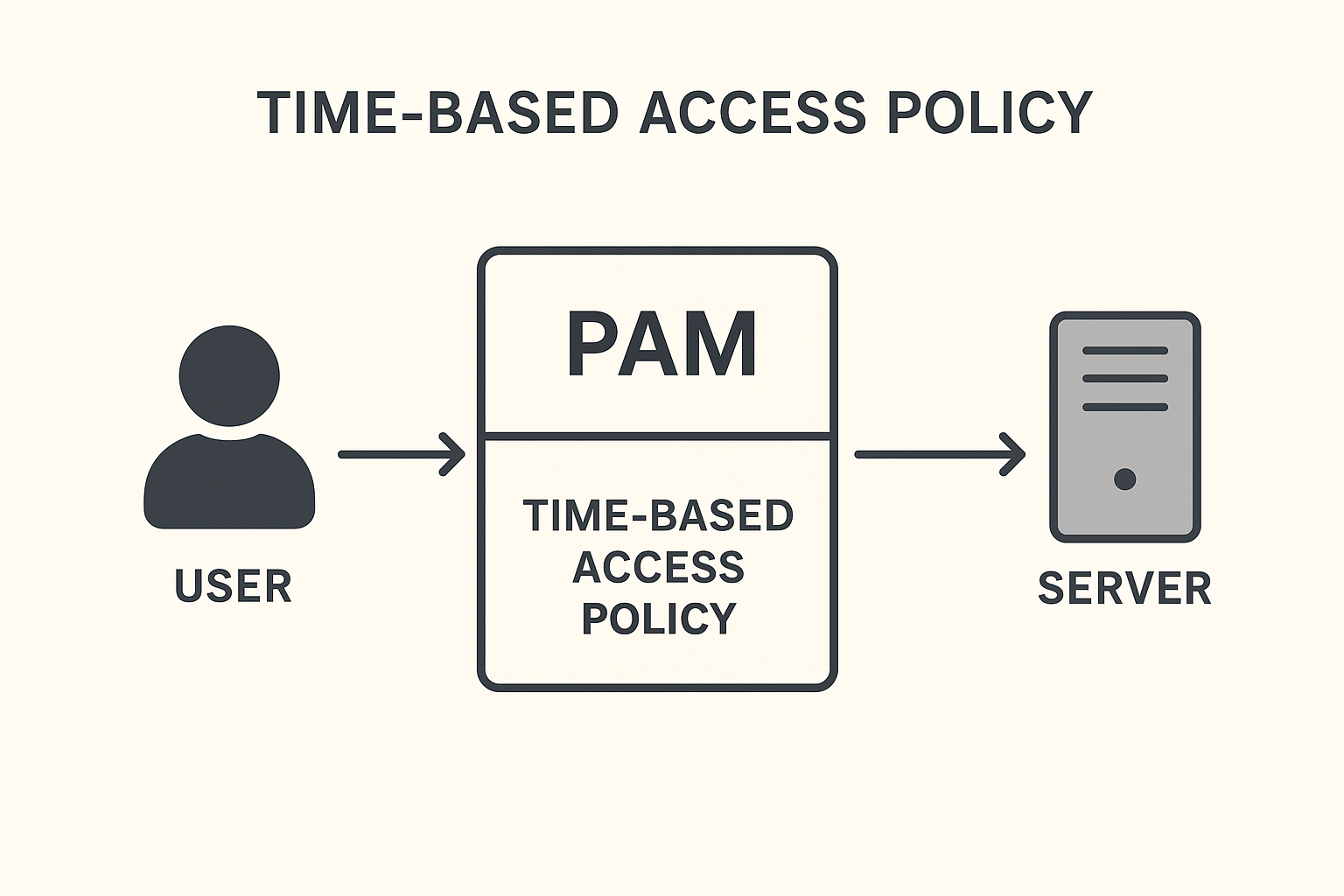Time-Based Access Policies in PAM: Why They Matter for Cybersecurity
Privileged Access Management (PAM) has become one of the cornerstones of modern cybersecurity strategies. Organizations today are no longer asking whether PAM is necessary—it’s about how to implement it effectively in a way that supports security, compliance, and operational efficiency. One critical capability in this area is the Time-Based Access Policy, which ensures that privileged access is only available at the right time, for the right reason, and under controlled conditions.
What Is a Time-Based Access Policy?
A Time-Based Access Policy allows administrators to define specific time windows during which privileged accounts or sessions can be accessed. Instead of granting permanent or unlimited access, this feature restricts usage to predefined schedules—for example:
-
Allowing database administrators to log in only during maintenance hours.
-
Enabling contractors to access systems only for the duration of their project timelines.
-
Blocking after-hours access to sensitive servers unless explicitly approved.
This model directly supports the principle of least privilege by minimizing exposure and ensuring accounts are not left active and vulnerable when they are not needed.
Why Is It Important?
Cyber attackers often exploit excessive or uncontrolled privileged access. By enforcing strict time restrictions, organizations reduce the attack surface significantly. Even if credentials are compromised, they become useless outside the approved access window.
Additionally, time-based controls help organizations align with globally recognized cybersecurity standards such as:
-
NIST Cybersecurity Framework – emphasizing risk reduction through access governance.
-
ISO/IEC 27001 – requiring controlled access to information systems.
-
Zero Trust Architecture (NIST SP 800-207) – reinforcing the concept that access should always be contextual, dynamic, and continuously verified.
Beyond Time: Forbidden IPs and Allowed IPs
While time-based policies handle the “when” of access, IP filtering features manage the “where.” PAM solutions like Gaterzone provide both Forbidden IP and Allowed IP policy options:
-
Allowed IP Policy: Only specific trusted IP ranges (e.g., corporate VPN or office networks) can access privileged systems.
-
Forbidden IP Policy: Known malicious, high-risk, or untrusted IP addresses are permanently blocked from connecting, regardless of credentials.
By combining these controls with time-based restrictions, organizations can build stronger Zero Trust environments—where no request is inherently trusted, and every access attempt is validated against multiple contextual factors.
Security Advantages
Implementing Time-Based Access and IP Filtering policies in PAM provides organizations with:
-
Reduced Attack Surface: Limiting both time and location drastically reduces opportunities for attackers.
-
Better Compliance: Meets regulatory requirements for access governance and audit readiness.
-
Operational Efficiency: Eliminates the risk of “always-on” privileged accounts, ensuring administrators work within clearly defined, secure boundaries.
-
Zero Trust Enablement: Aligns with the industry’s best practices by enforcing contextual, least-privilege, and just-in-time access.
Conclusion
Time-Based Access Policies, along with Forbidden and Allowed IP controls, are no longer “nice-to-have” features—they are essential components of modern PAM solutions. They directly enhance security, enable compliance, and support Zero Trust strategies in an increasingly complex threat landscape.
Gaterzone offers these capabilities and much more, giving organizations the tools they need to manage privileged access effectively and securely. To experience how Gaterzone can strengthen your organization’s cybersecurity posture, contact us today for a demo.
Time-Base Access Overview





